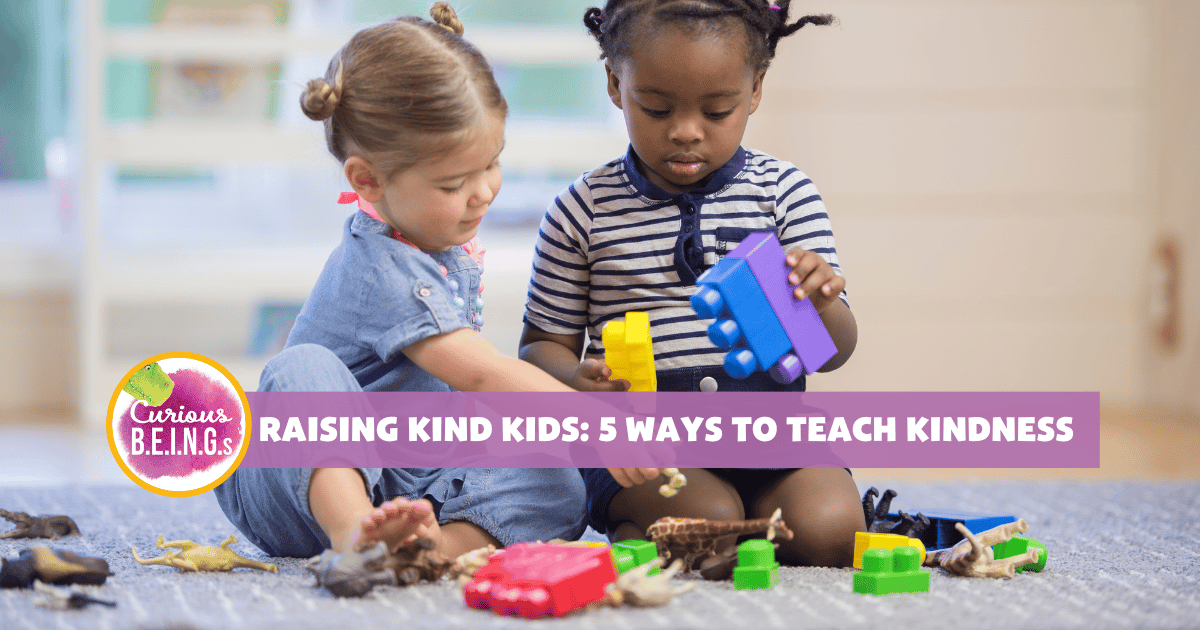By: Simón Price, Kindergarten Teacher at Cherry Hills Village Elementary
According to the Dalai Lama, being kind and generous not only cultivates happiness in ourselves, but also benefits those around us. My parents often reminded my sister and me of the Golden Rule: “Treat others how you would like to be treated.” Children need to learn how to treat others as they would also like to be treated with care and compassion. Understanding this as a child will give them a solid life foundation.
Raising kind kids
Children learn to be kind through examples from the world around them–both positive and negative. It is essential to point out examples as they appear and discuss how kindness was being shown, or not shown.
For instance, on the playground or at the park, pointing out a child who helped another child up after falling from the monkey bars. Ask your child, “how do you think the child who showed kindness felt?” This type of conversation is essential as it helps kids form an idea of how kindness feels when given or received.
From preschool to Instructional Learning Centers (ILC) in elementary school to full inclusion in middle school, my 25 years of teaching experience spans a variety of settings. Regardless of the specific setting, I feel that my job as an educator is to act as a role model and support students with opportunities to become kinder children. Some children come to school with established role models, while others need more support from their teachers at school.
5 ways to teach kindness to kids
As educators and parents, we want our children to live happy, healthy, and meaningful lives, so we must provide tools and opportunities to practice kindness. Here are a few of my go-to ways to teach kindness to kids:
- Note acts of kindness while they play. This one is so simple. While your kids play with others or on their own, point out acts of kindness in their play and share precisely what you noticed and how it made you feel. For example, “Tonya, I liked how Teddy Bear shared his cookies with Elephant. It made my heart happy to see Teddy Bear being so kind.”
- Relate kindness to their senses. Kindness becomes more tangible and less abstract when you relate it to kids’ senses. Kindness is not something that can be physically touched or seen, but it can be felt. Take this example:
- Teacher/Parent: “Isaiah, how did it make you feel when Marcus screamed at you for taking his toy?”
- Isaiah: “It made me feel sad and mad. It hurt my ears because the noise was so loud. I asked him for the toy before I took it.”
- Teacher/Parent: “Do you think that Marcus heard you ask based on how he acted? How did he feel?”
- Isaiah: “No, he probably felt surprised and mad.”
- Teacher/Parent: “Next time, make sure that your friend sees and hears you and answers before taking the toy.”
- Plan a kindness circle. One of my favorite ways to teach kindness is with a kindness circle at the end of the day. The children each point out someone who was kind to them during the day. You can do this at home, too! Ask your family to go around the dinner table and point out one act of kindness they experienced or witnessed during the day. For instance, I might say, “The woman at Target was kind and helped us find the toy I wanted to give Maribel for her birthday.”
- Link to literature. There are so many excellent children’s books that provide kids with concrete examples that they can relate to their own lives with adult discussions. Children can use their imagination to enjoy the character’s adventures while noting ways the characters show or do not show kindness to each other.
- Present weekly kindness missions. Many calendars online are filled with ideas to use for weekly family or classroom kindness missions. I often use these with students during November as a way for all of us to be thankful for what we have and show kindness to others. The kids often notice how good they feel when they perform acts of kindness and when they share stories about it afterwards. Weekly kindness missions also allow the children to be more aware of acts of kindness throughout the year.
About Guion The Lion
See? Raising kind kids doesn’t have to be a challenge, but it does take intentionality. Follow Guion The Lion on Facebook and Instagram and subscribe to the Guion The Lion newsletter for more tips and activities for raising kind, compassionate children.
Guion The Lion is all about presenting messages of kindness, curiosity and adventure before children begin making their own judgments and assumptions. Through the children’s book, parenting/teaching resources, fun activities and more, kids can learn how appreciating differences, practicing kindness and embracing new ideas leads to unimaginable fun.




